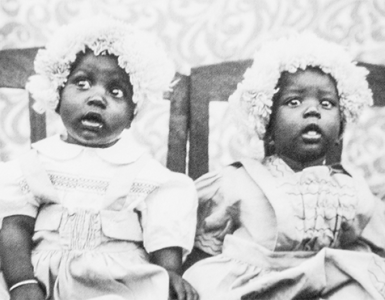LEGEND: Song, dance led by Abdullah Ibrahim at Market Theatre honours saxophonist legend’s 100 anniversary
By Jacob Mawela
The book review of From Kippie to Kippies and Beyond, authored by Sam Mathe, coincides with the birthday day of the late Kippie Morolong Moeketsi
The famous alto saxophonist was born on July 27, 1925. Had he been alive, he would have turned 100. He died at the age of 58 on April 27, 1983.
The Market Theatre Foundation commemorates the centennial milestone by collaborating with author, Mathe, to host a discussion/conversation around the book, an event scheduled to take place at the Market Theatre on Sunday.
The musical shindig will follow at around the theatre’s precinct, at the John Kani Theatre, located at the Market Theatre.
Jazzophile Abdullah Ibrahim will lead the musical celebration, with the celebrant, Mathe, laying it all what prompted him to embark on a journey of writing the book, among other things.
Lauded as encyclopaedic by notable academic, Prof Njabulo Ndebele, the title of Mathe’s oeuvre, was inspired by the departed reed player – who saw the sun 100 years ago, now deceased for 42 years.
It is a tribute to hundreds of musicians who are a forgotten memory, as well as the younger generation currently performing.
Stretching back over four generations of musicians, it paints intimate biographical portraits of jazz, folk and pop artists. Heavyweights such as Miriam Makeba, Hugh Masekela, Lucky Dube, Brenda Fassie, Abdullah Ibrahim, Dorothy Masuka, Letta Mbulu, and Johnny Dyani, are among those featured, while styles of music include marabi, kwela, mbaqanga, free jazz, and contemporary sounds.
Moeketsi was born in the Joburg CBD – a decade which saw the birth of marabi, the ivories-based musical genre of the black working class who lived in the slums of the Reef.
This ultimately resulted is a collation of more than 300 biographical synopses of South African jazz, folk, and pop artists.
Additionally, this incorporates others located in the Southern African region. Their inclusion is validated based on their studying, working and living in the country.
This straddles four generations – meticulously spread over more than four hundred pages, and augmented by discographies, a list of documentaries useful for reference, a glossary defining the various musical terms, and miscellaneous vocabulary, as well as references.
Mathe’s initial interest focused in profiling the older generation – the likes of Miriam Makeba, Abdullah Ibrahim, Chris McGregor, Jacob Mpharanyana Radebe, and Margaret Mcingana.
He eventually decided to include contemporary practitioners such as the Kesivan Naidoo, Tumi Mogorosi, Siya Makuzeni, Zoe Modiga, among others.
He embarked upon the project in 2005 which is now onto its second edition.
The format of the group portraits presented in text, and sans images, comprises musician backgrounds, career and discographies.
He also included musical genres ranging from gospel, isicathamiya, jazz, kwela, marabi, mbaqanga, mbube, Afro-pop, Boeremusiek, and kwaito.
Mathe proclivity for music harks back to his pre-teens in the 1970s when he first heard Moeketsi over the radio.
Later, as a student at Wits University, he frequented music shops such as Kohinoor in Johannesburg in search of his music.
It would be remiss of the scholarly Mathe not to indulge the reader in off-stage anecdotes such as the Mseleku family’s piano ending up as firewood upon experiencing hard times after the untimely death of the patriarch – rendering the then 17-year-old Bheki to having to resort, for his upkeep, to the musical Nokwe family.
Also included in the musical package are the Ngcukana brothers – Fitzroy, Ezra, Duke, Claude, Cyril and Ray.
Mathe’s effort meanders the reader’s imagination to nostalgia-evoking neighbourhoods of yesteryear such as Cato Manor, District Six, Dukathole, Duncan Village, Lady Selbourne, New Brighton, Prospect Township, and Sophiatown.
The very nativities and basis of both inspiration and despair of some of the featured artists include Sipho Gumede, Abdullah Ibrahim, Jacob Mpharanyana Radebe, Tete Mbambisa, Tlokwe Sehume, Duke Makasi, Miriam Makeba, and Thandi Klaasen.
The pioneers’ stomping grounds ranged between Moroka-Jabavu Stadium, Soweto, to New Brighton’s Jabavu Road.
His book is also embellished with formations and figures which either crossed paths with some of the musicians, or had remote influence on their respective body of work – which includes notables such as the Wilson King Force-led Jazz Maniacs whom a young Moeketsi admired, Michael Mosoeu Moerane, a venerated composer who taught his nephew, ex-South African president Thabo Mbeki how to play the flute; Mamelodi-raised guitarist, Moses Bra Moss Mogale’s association with the House of Bondage; photographer Ernest Cole; Bheki Mseleku’s Oxford-educated musician father, William; and his friendship with Africa’s foremost Nobel Peace Prize laureate, Chief Albert Luthuli.
Others who came to know Moeketsi include Louis Moholo of the Blue Notes fame, whose idolisation of Xhosa music composer, Benjamin Tyamzashe, is legendary.
Of the young blood currently holding sway include Siya Makuzeni, the East London-born trombonist-cum-vocalist whose accomplishment was recognised in 2016 with the coveted Standard Bank Young Artist Award and fellow SBYAA recipient, Mandla Mlangeni, the son of the assassinated ANC lawyer, Bheki Mlangeni.
Another SBYAA awardee, the electrifying jazz drummer, Kesivan Naidoo, became part of Moeketsi’s life.
The contemporary roster spreads widely. Mathe’s comprehensive list includes familiar Southern Africa names such as the Kingdom of Lesotho’s swinging jazz drummer, Morabo Morojele; and singer Tsidii Leloka, a Mozambican jazz guitarist extraordinaire; Jimmy Dludlu, Zimbabwean ethnomusicologist Louis Mhlanga.
Author Mathe, was himself inspired by Drum writers of the 1950s.
The book is mostly self-funded. He received some financial assistance from the Academic and Non-Fiction Authors’ Association of South Africa and the Norwegian embassy.
His book was first launched in 2021, with Robert McLaren of Themba Books agreeing to a co-publishing deal.
An award-winning writer, Mathe’s journalism career stretches from 1994, working for the now defunct Pace magazine.
He then joined Drum magazine and later Sunday Sun as a senior writer.
He is a founding editor and publisher of Jazz Life magazine. His role in the media includes writing articles that reflect on South Africa’s cultural history and heritage.
• From Kippie to Kippies and Beyond is published by Themba Books and available on Amazon.

































